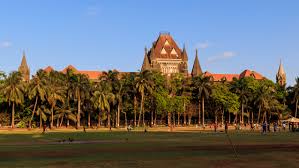Understanding the Role of the Bombay High Court

Introduction
The Bombay High Court, one of the oldest and most significant High Courts in India, plays a crucial role in the country’s judiciary system. Established in 1862, it serves the states of Maharashtra, Goa, and the Union Territories of Dadra and Nagar Haveli and Daman and Diu. With its jurisdiction over various judicial matters, recent developments have highlighted its importance in upholding justice and constitutional rights.
Recent Developments
On October 16, 2023, the Bombay High Court delivered a landmark judgment involving the rights of transgender individuals, underscoring the court’s commitment to equality and justice. In a ruling, the court directed the state government to ensure that transgender persons receive free health services, a move praised by human rights activists and policymakers alike. This decision reinforces the court’s role as a protector of marginalized rights, reflecting a progressive approach to social issues.
Additionally, the court has been actively addressing urgent matters related to environmental concerns, including waste management and pollution in urban areas. In a recent case, the court ordered local municipal corporations to take immediate actions against illegal dumping in designated areas, showcasing its responsiveness to public health and environmental issues.
Significance of the Bombay High Court
The Bombay High Court is not just a legal body; it is also a symbol of hope for many citizens seeking justice. The court’s decisions can set precedents that influence legal interpretations and rights across India. With a diverse range of cases, from civil to criminal law, its function goes beyond mere adjudication; it shapes the very fabric of Indian law and society.
Moreover, the High Court’s proactive stance in addressing social issues indicates an awareness of its broader role in shaping public policy and law. The court’s ability to interpret and enforce the constitution plays an essential role in maintaining rule of law in the country.
Conclusion
As the Bombay High Court continues to evolve and adapt to contemporary challenges, its significance will likely grow in the coming years. Legal scholars and citizens alike should remain attentive to the court’s rulings and their implications for the future of justice in India. With ongoing attention to human rights, environmental protection, and social justice, the Bombay High Court remains a pivotal institution that not only interprets law but also reflects societal values and changes.









